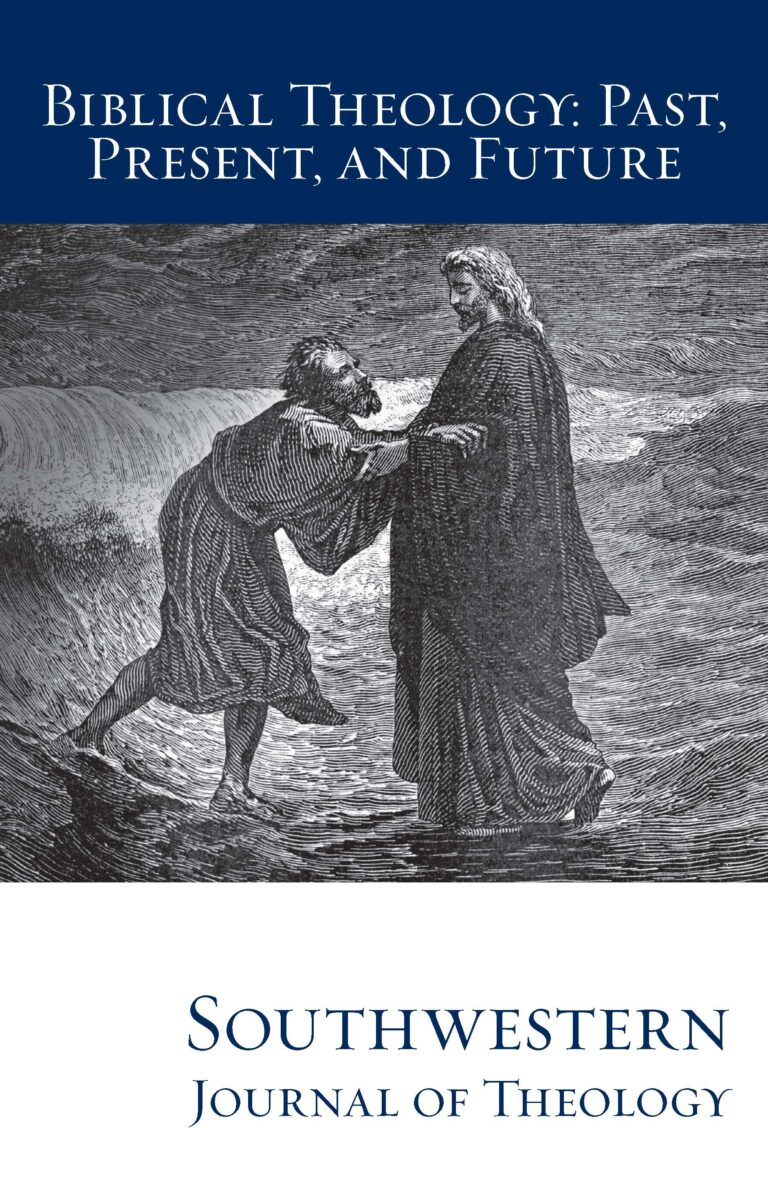
Biblical Theology: Past, Present, and Future (II)
Southwestern Journal of Theology
Volume 56, No. 1 – Fall 2013
Managing Editor: Terry L. Wilder
By Thomas Schreiner. Exegetical Commentary on the New Testament. Grand Rapids: Zondervan, 2010. 423 pages. Hardcover, $34.99.
Thomas Schreiner, a well-known Pauline scholar, has added the ninth volume to Zondervan’s new exegetical commentary series. The series is still in progress and far from being complete, but it impressively lives up to its name. The series calls not only for an exegesis of the text, but each pericope is broken down into “literary context,” “main idea,” “translation,” “structure,” “exegetical outline,” “explanation of the text,” and “theology in application.”
Some elements become repetitious since there is naturally some overlap between “literary context” and “explanation of the text,” but the layout is beneficial for students and pastors, especially for those who wish to teach or preach the text. Those who are preparing to do so will benefit from the “main idea” section. They can immediately discover a brief explanation of the main idea of the pericope and study the text while keeping the main idea in mind.
The “translation” portion is more than just text. The translation is given in block diagram format, with the function of each clause given in the left margin (e.g., inference, result, apposition). Also helpful is the exegetical outline, which is repeated (in compressed form) before each “explanation of the text” so one may see visually where the passage fits into the epistle as a whole. Perhaps one of the best features of the commentary is that, for every verse, Schreiner’s English translation is given, followed by the Greek text, followed by Schreiner’s explanation. Thus, the commentary may be read by itself without the necessity of one or two Bibles sitting nearby.
Schreiner does nothing too surprising in the commentary. His conservative exegesis in the Reformed tradition is to be expected—but this does not mean it is poorly done. Throughout the commentary he shows both exegetical skill and abundant interaction with secondary sources. As expected, he also interacts with the New Perspective throughout the commentary, usually rejecting their conclusions. One regrettable aspect of this commentary series is that it seems Schreiner was limited in his ability to argue specific points, especially with advocates of the New Perspective or of anti-imperial readings. An occasional footnote reads, for example, “It is less likely that Paul has in mind Israel’s political subjugation under Rome. Contra Hays, Galatians, 303-4” (302). The student or pastor may not worry about such an issue, but scholars and those interested in such critical issues will be better served by other commentaries than Schreiner’s.
Schreiner follows the South Galatian theory, although tentatively (29), noting the difficulties of both the South and North Galatian positions. His position on “mirror-reading” to discover the opponents’ arguments, theology, and origin is also quite conservative and helpful. He notes the evidence in the epistle that are explicit, then the evidence that may be “justly inferred,” then what is “probable,” then what is “less certain,” and finally what is “conceivable and possible” (33-35). After critiquing the history of research on the identity of the opponents in Galatia, he opts for the traditional Judaizer theory. The opponents were probably Pharisaic Jews as in Acts 15 who believed themselves to be Christians (48-49). They accused Paul of (1) deriving his gospel from the Jerusalem pillars, (2) distorting this gospel, and (3) doing so to please the Gentiles and win their approval (49).
Schreiner’s treatment of difficult passages, such as 2:11-21 and 4:21-5:1, are both careful and helpful. While no one will agree with him on every point, his arguments hold weight. Again, however, more space would have allowed for more extensive argumentation and interaction with other views. While the sub-sections are nice, they do take up about a third of the commentary. The student and pastor will forgive Zondervan for this, especially since Schreiner’s pastoral side shines forth in the “theology in application” section. Lastly, everyone can appreciate the last section of the commentary, where Schreiner explains twelve theological themes in Galatians. This commentary will not impact the scholarly community as the commentaries of Lightfoot and Burton, but for what it attempts to do for the student and pastor, it is probably the best commentary yet.





